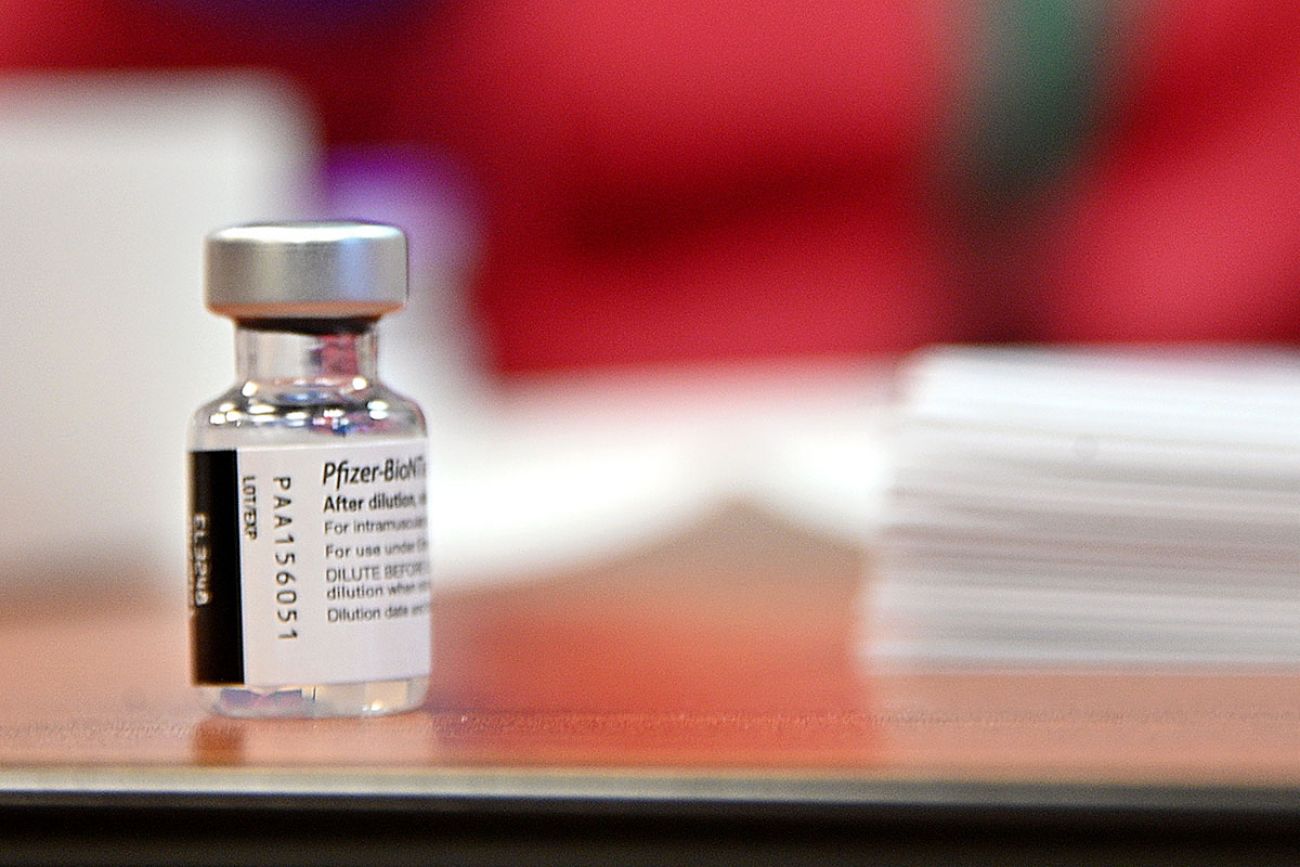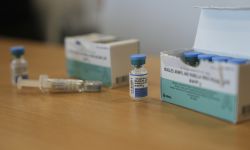Facts are stubborn things for Whitmer, Michigan GOP when it comes to COVID

When it comes to numbers, almost all politicians use the ones that make them look the best.
Same goes for tried-and-true narratives, even when they require cherry-picking data.
Nearly one year into the coronavirus pandemic, the facts are still getting a workout in Michigan, as Gov. Gretchen Whitmer and her Republican counterparts continue to rely on numbers that advance their agendas.
“Information in the pandemic is viewed through everyone’s personal prism,” said Matt Friedman, a metro Detroit public relations and crisis communications consultant.
“We’re in a political environment right now where people disagree about facts.”
Do they ever.
Related:
- Schools outraged that bars can open in Michigan, but not winter sports
- Michigan’s new House speaker: We’ll fight Whitmer until she works with GOP
- Gretchen Whitmer calls for unity in COVID fight as Michigan GOP digs in heels
To hear the governor tell it, Michigan is doing better than almost any state at administering the coronavirus vaccine, even though Republicans say the rollout is a “nightmare.” And Republicans are claiming that Whitmer’s COVID restrictions have “punished” the economy.
This isn’t new.
In May, Bridge Michigan raised questions about Whitmer’s claims that rural hospitals were nearly full (nope), the role of anti-Whitmer protests in spreading the virus (untrue), and Chief Medical Examiner Dr. Joneigh Khaldun’s assertion that COVID restrictions would last into 2021 (well… on second thought.)
In that vein, here’s a look at a few assertions in the past few weeks that, at the very least, deserve some explanations.
Claim No. 1: Whitmer says Michigan is No. 6 in the nation in vaccinating residents. Or maybe the “Top 10” or “No. 11,” depending on the day.
As the state first started rolling out vaccines in December, Michigan did not fare well compared with other states, ranking 45th at one point in doses administered per 100,000 people.
It’s now up to 17th for first doses administered (and 18th for both doses), according to the latest numbers from the Centers for Disease and Prevention, a good recovery.
But to hear state officials talk about it, including Whitmer, Michigan has done far better.
After the first wave of stories about the state’s low ranking, Whitmer’s administration told reporters in early January that new numbers later that day would show the state was “in the top five.”
In fact, the data still showed the state mired near the bottom.
State officials then said Michigan had administered the 11th most vaccines in the nation.
That sounds good — until you consider that Michigan is 10th most populous state in the country and vaccines are distributed based on population.
Since then, the state has improved. But during her State of the State address last week, Whitmer went back to the total doses administered metric, saying the state now ranked sixth in the nation.
That is better than 10th, the state’s population, but it still hid the fact that, at the time, there were 19 other states doing better at the rate of vaccinations.
To accurately compare states of varying populations, you have to use a rate, not the raw totals.
Claim No. 2: Michigan’s economy remains shut down. Or the pain is limited to parts of the economy that “have not been fully engaged.”
There’s been no clearer war between Republicans and the Whitmer administration than over the safety restrictions affecting some businesses.
Indeed, Michigan was one of just a handful of states that continued to ban indoor dining until Monday.
Opponents of the measures called the restrictions, including a ban on indoor contact sports, arbitrary. Senate Majority Leader Mike Shirkey, R-Clarklake, labeled the administration's actions “punishing shutdowns.”
“Like many Michiganders, we are listening to the governor’s speech tonight in the hopes of hearing answers. Putting Michigan back to work is long overdue,” Shirkey wrote on Twitter last week, before Whitmer’s State of the State speech. “Tonight, we want to hear Gov. Whitmer acknowledge it is time to lift her unnecessary restrictions.”
I'm dismayed by @GovWhitmer’s continued closure of local businesses. This is another display of the tone-deaf response we continue to hear from the Governor. Overreach by the Governor has crippled an entire industry and peripheral supply chain businesses. pic.twitter.com/9pIdpioTVx
— Sen. Mike Shirkey (@SenMikeShirkey) January 13, 2021
Is the economy shut down? No.
Is it hurting? Very much, yes.
In mid-November, as a second wave of the coronavirus was sweeping the state, Whitmer, through an order issued by her now-former Health Director Robert Gordon, closed schools, restaurants and other businesses. Limits were put on the size of gatherings.
The “pause” was extended in December and again in January before bars and restaurants were allowed to reopen Monday with capacity capped at 25 percent.
Most of the economy, though, has been open for months.
Few jobs are restricted: auto plants are running, retail stores are open, movie theaters can show movies again. Here’s what you can’t do now: go to a nightclub, play an indoor contact sport or go to an indoor water park.
That said, unemployment in the state, 7.5 percent in December, is the 12th highest rate in the country. It is 5.5 percent in Ohio and 4.3 percent Indiana.
In responding to questions about the economy, Whitmer has been careful with her words. Last week, she told reporters “the economy’s not closed. It’s not been closed for eight months.”
"Certain aspects of our economy have not been fully engaged,” she said last week.
Those “aspects” include tens of thousands of workers in the restaurant and bar industry, including nearly 3,000 businesses that have closed following business restrictions.
Whitmer and her administration have defended the restrictions, saying they saved lives — which gets us to the next point.
Claim No. 3: Business restrictions saved 2,800 lives
University of Michigan researchers who work with the state on analyzing the pandemic and anticipating trends came out with a report last week that claimed Gordon’s “pause” on business activities including restaurants saved 2,800 lives.
Dr. Joneigh Khaldun, the state’s chief medical officer, tweeted the good news. So too did Whitmer’s deputy chief of staff, Zach Pohl, and some Democratic state legislators.
No doubt, the pause may have saved some lives. But the U-M study inflated the number.
The researchers looked at mobility data gleaned from cell phones and compared it to past trends.
They concluded that the restrictions, from mid-November to Jan. 8, had helped the state avoid 109,000 coronavirus infections. With the state estimating that 2.6 percent of all cases have ended in death, it would mean roughly 2,800 deaths were avoided.
The first estimate is dead on. Just before the pause, Michigan had one of the highest rates in the country (86 new daily coronavirus cases per 100,000). That was nearly a quarter higher than the rate in Ohio (67 per 100,000).
Ohio did not adopt a pause, though it enacted a 10 p.m. statewide curfew. But restaurants and bars there remained open.
Over the next seven weeks, Ohio experienced nearly 444,000 new coronavirus cases, about 187,000 more than Michigan (Ohio has 1.7 million more people than Michigan).
So it seems plausible the pause may have helped Michigan avoid thousands of infections. (At 20 cases per 100,000, Michigan’s rate now is still half as large as Ohio’s 42 cases per 100,000.)
But upon questioning from Bridge Michigan, Marissa Eisenberg, the head researcher behind the U-M study, acknowledged the 2,800 estimate of deaths saved may be too high.
Here’s why: the state calculated its mortality rate by dividing all deaths (now at 14,600) by all known coronavirus infections (now at 558,000).
Early in the pandemic, it was hard to get a test and researchers know that for every known positive test, there were likely many undetected cases.
There were 185,000 coronavirus tests in April (23 percent were positive) compared to 1.5 million tests in December (of which 10 percent came back positive).
The overall mortality rate would be inflated if it was calculated without including the thousands of actual cases that weren’t confirmed; in fact John Hopkins University has estimated the mortality rate in the United States at 1.7 percent.
After talking with Bridge, Eisenberg calculated the data again, looking only at COVID cases from Nov. 18 onward (as researchers they can track every case and learn whether the person died or not).
The result: 1.8 percent of cases ended in death, not 2.6 percent.
She told Bridge that her newer calculations would mean the state avoided 1,960 deaths. “That’s still a lot,” Eisenberg said.
She has since updated the information she had shared with the Khaldun and others with the state.
See what new members are saying about why they donated to Bridge Michigan:
- “In order for this information to be accurate and unbiased it must be underwritten by its readers, not by special interests.” - Larry S.
- “Not many other media sources report on the topics Bridge does.” - Susan B.
- “Your journalism is outstanding and rare these days.” - Mark S.
If you want to ensure the future of nonpartisan, nonprofit Michigan journalism, please become a member today. You, too, will be asked why you donated and maybe we'll feature your quote next time!








